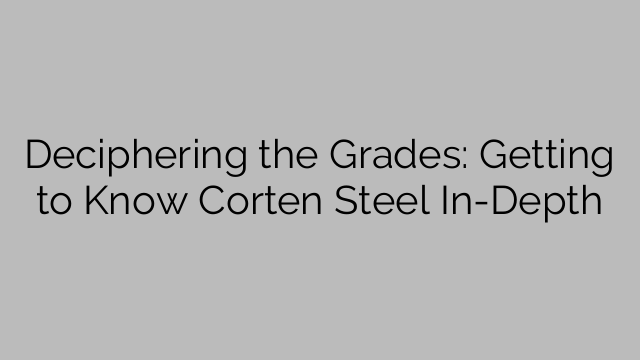The secret behind Corten steel’s extraordinary properties lies in its chemical composition. It is primarily made up of iron, but it also contains small amounts of copper, chromium, nickel, and phosphorus. These alloying elements work together to create a protective layer on the steel’s surface when exposed to the elements.
When Corten steel is subjected to natural elements such as rain, snow, and sunlight, a complex chemical reaction occurs. This reaction causes the steel to undergo a process called corrosion, resulting in the formation of a patina that gives Corten steel its striking rusty appearance. However, this patina is not a sign of degradation; instead, it acts as a protective barrier against further corrosion.
In addition to its unique aesthetic appeal, Corten steel is also highly durable. Its weather-resistant properties make it an excellent choice for outdoor applications, as it can withstand extreme temperatures, moisture, and even saltwater. This makes Corten steel a popular choice for coastal projects, where traditional materials may quickly deteriorate due to exposure to a saline environment.
Despite its numerous advantages, not all Corten steel products are created equal. There are several grades of Corten steel available, each with its own specific properties and applications. The most commonly used grades of Corten steel are ASTM A588 and ASTM A242. ASTM A588 is often used in building exteriors, while ASTM A242 is more commonly found in bridges and structural applications.
ASTM A588 is known for its high tensile strength and corrosion resistance, making it suitable for various outdoor structures, such as facades, cladding, and architectural features. On the other hand, ASTM A242 is a lower-strength grade that is often used in bridges and other load-bearing structures. It is designed to have better atmospheric corrosion resistance compared to ASTM A588.
When working with Corten steel, it is crucial to understand the specific grade and its intended application. Consulting with a knowledgeable supplier or engineer can help ensure that the appropriate grade is selected for your project, maximizing its durability and aesthetic appeal.
While Corten steel offers numerous benefits, it is not without its limitations. The rusty patina it forms can cause staining on nearby surfaces, such as concrete or wood. Additionally, during the initial weathering phase, the runoff water from Corten steel may stain surrounding materials. Taking necessary precautions, such as using a barrier between Corten steel and other surfaces, can mitigate these issues.
In conclusion, Corten steel is a fascinating material with remarkable properties. Its distinct appearance, durability, and resistance to harsh weather conditions have made it a popular choice among architects, designers, and artists. Understanding the different grades of Corten steel and their applications is essential for creating successful and long-lasting projects. With proper care and consideration, Corten steel can add a touch of sophistication and character to any design.
[ad_2]

